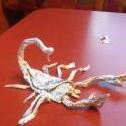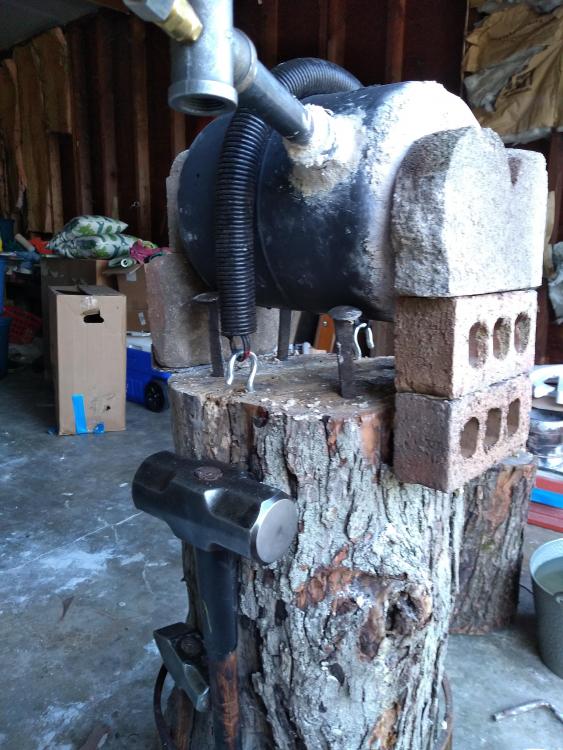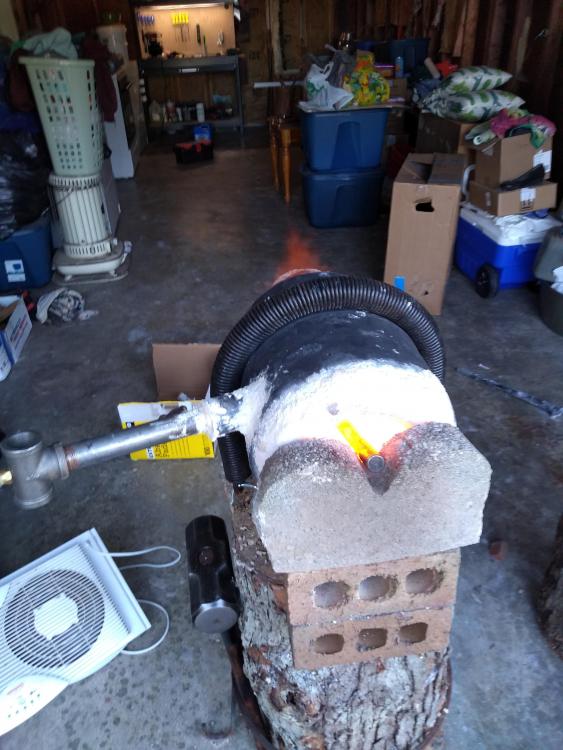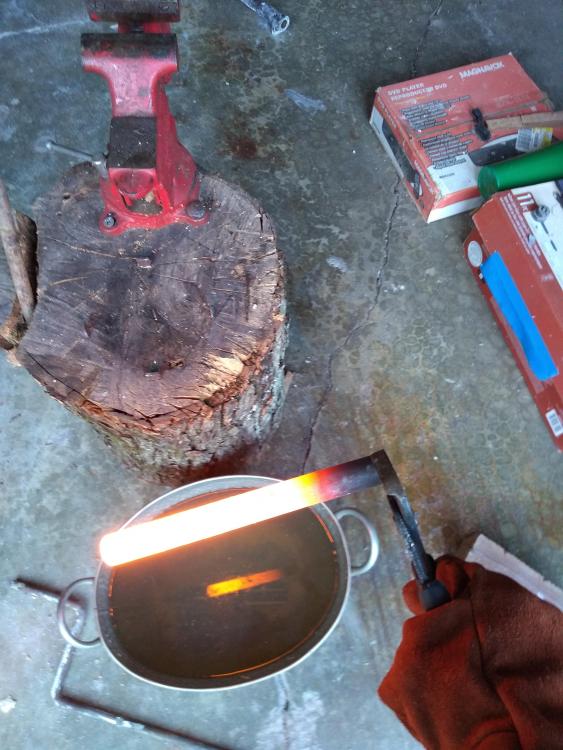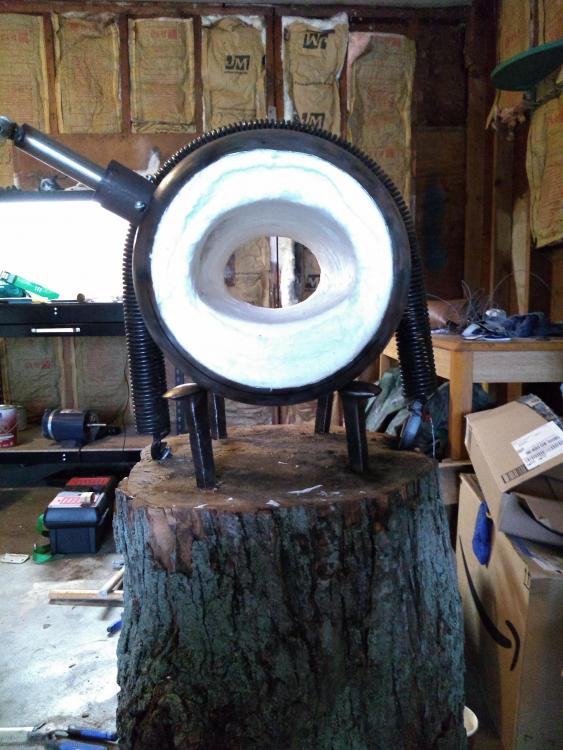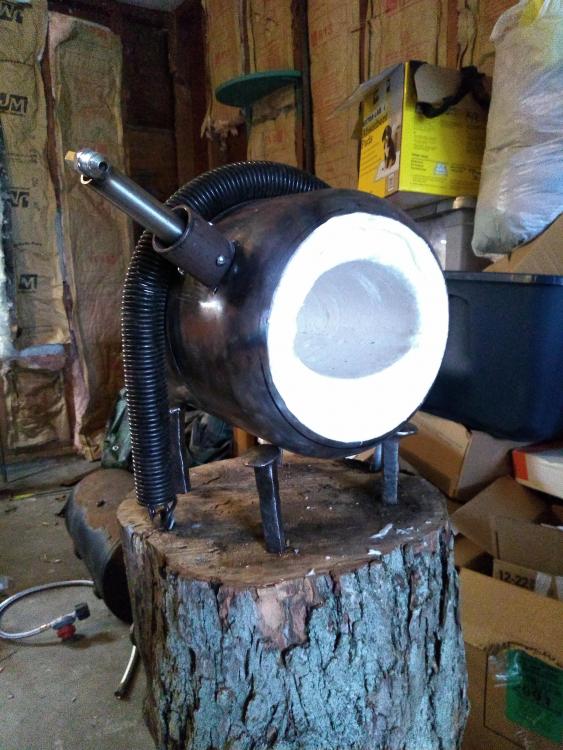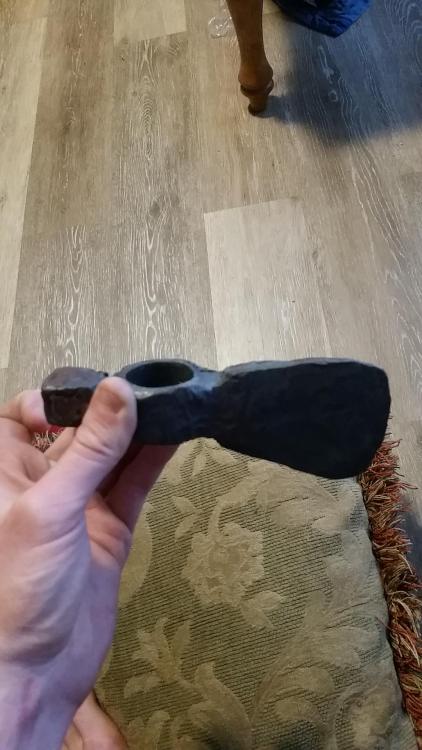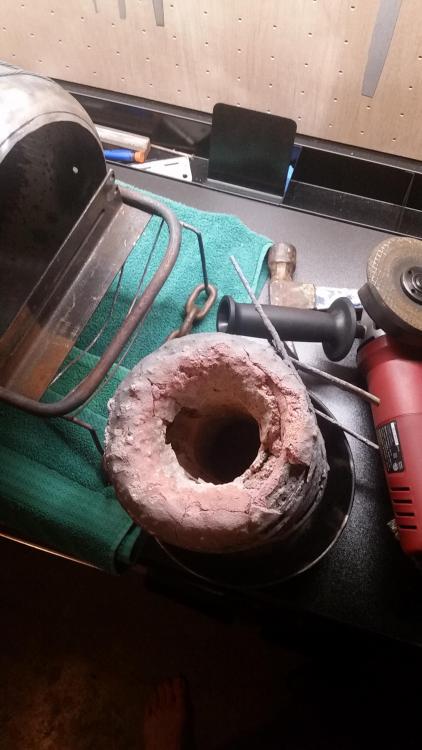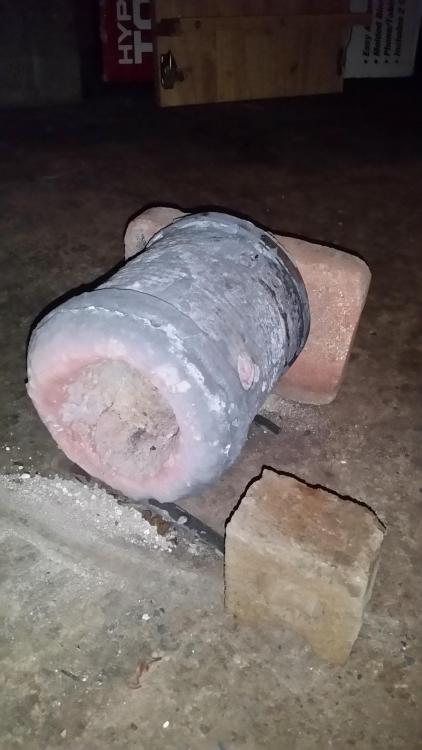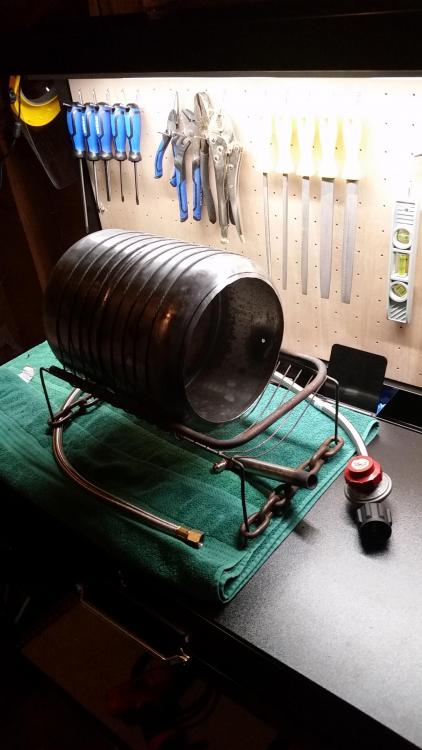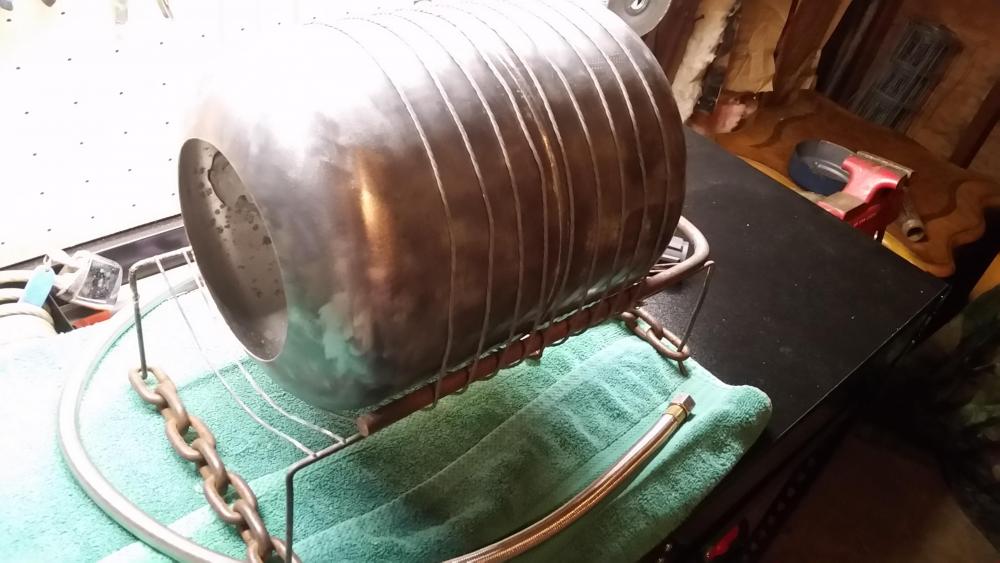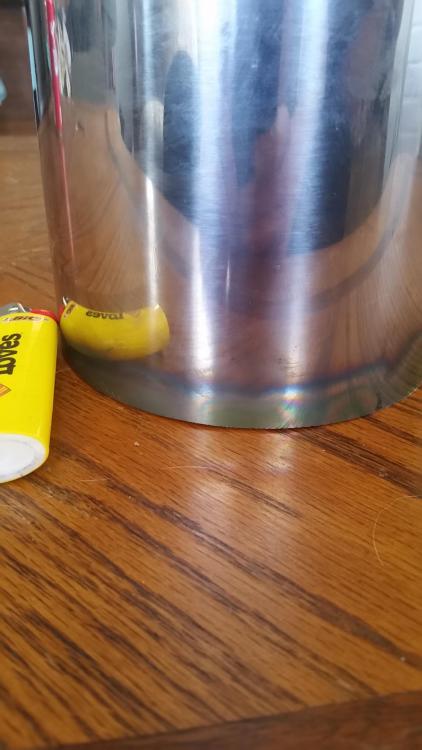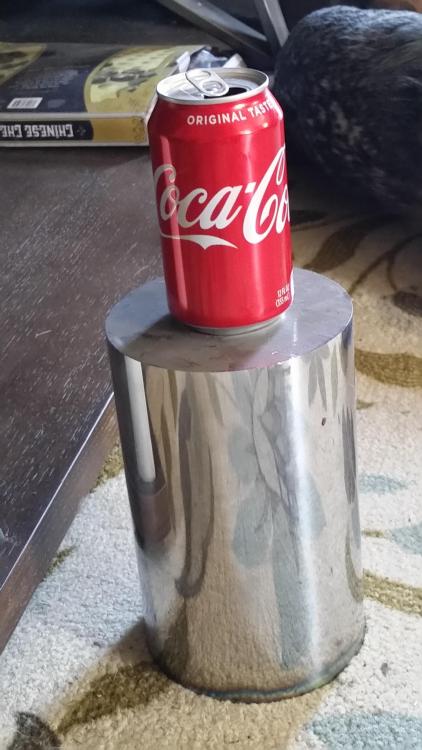-
Posts
15 -
Joined
-
Last visited
Content Type
Profiles
Forums
Articles
Gallery
Downloads
Events
Everything posted by Orangejoe
-
I have had a score of different forge and melting furnace builds. Kaowool with kol30 liner, homemade grog and clay, castable with perlite and a hotface... I know it goes against the conventional wisdom on here, but I found i preferred a commercial refractory mixed with perlite at a 1 to 4 by volume ratio with a thin refractory hotface, that is with one exception- the perlite in the insulation layer slowly begins to flux through after one or two dozen copper melts. I rushed when i made this, and should have read more. I have been using the Wayback Machine to read some old archives on alloyavenue/ backyardmetalcasting and a bit here and am interested using either sawdust or small (1/8" and below) styrofoam beads to form air pockets in my insulating layer on my new project. I see a lot of different opinions on which is better and why, as well as whether finer or slightly more coarse is better. This will be a 2 inch layer behind a 1/16 to 1/8 inch hotface of the same high alumina castable refractory. Thanks for the help guys.
-
Titanium does not melt until a bit over 3000*f, is far more readily available these days than in the past, is inert and I imagine would conduct heat back to the work very well, if backed by say 2 inches fiber. I can get 3" OD 1mm titanium tubing for around 80 bucks and that's for 24 inches. Is there any reason this wouldn't work on paper? I assume it would become too flexible close to it's melting point, but for a forge that you never took above say 2400 could it work? I know that the made propane flame temp is over the melting point, but Ti being metallic, I would think it would conduct and spread any localized high heat, say where the flame impingement occurs. Maybe it's a silly thought, but can't hurt to ask!
-
It has been a while, but l have a working forge. I understand the red brick can spall, so I heated very slowly to force any water out and watched from behind a face shield. The rounded stones are for fire rings I believe. All of these are heatsinks that will need be replaced with kiln shelf asap, I got impatient. Seems to get up to a nice lemon in about 10 min at 7 psi I estimate. 3/4 inch t burner, 1/4 inch kastolite 30 hotface, would like to add a wash of metrikote at some point. Thank you to everyone for their council and wisdom, and a special thanks to Wayne Coe. Materials would have been a bear without him.
-
Unfortunately, in our last correspondence I was informed this is out of my price range. For anyone with the urge and the cash, I'll post the reply and the name. Thanks for listening everyone. I have an extra cylinder on my shelf that might do the trick. It is our Buster A-15 material, 8”ID x 11.5”OD (rough)x 11.6”L(rough). I can offer you this for $526.08 if no additional machining is needed. Let me know if a picture would help. The website is zircarzirconia.com.
-
He asked my operating temps, and without thinking, I estimated the temps from under a 1/2" kol 30 face. The material is rated at 1600 to 1800 C, depending on density. I assume the lightest stuff is the 1600. Edit: I made the thread and so I bear the burden of proof in a way, but if anyone is interested, follow the link in my first post. When you do, click on rigid, and go for the alumina stuff, with "buster" in the name and download the PDF. Im just now building my 1st serious forge, but (to my eye) the properties seem ideal.
-
I just read the PDF on the alumina Buster, it says it's got great shock resistance, some is used in "rapid thermal cycling applications." I agree, I'll ask for sure. The weight is from 15PCF to 45PCF. I won't count my chicks before they hatch, but fingers crossed.
-
Making my way through Forges 101, saw a link to a site specializing in various types of refactories, including rigid forms such as tubes. Only just made contact, but I'm just excited to find someone not just selling wholesale. In my initial message, I inquired on small orders and explained that I had read up on the alumina rigid tubes and would like to try one as a forge body, as a home hobbyist. This is the reply I received: "Thank you for your interest in our rigid materials. At 2300F, you are well within our range of materials. What kind of dimensions are you looking at for your layer of insulation? We have an alumina cylinder mold 15.5”ID x 7”L. We can make various sizes and lengths depending on your needs. The zirconia material has some limits though, 6” lengths unless you can stack a set of rings vertically, and some smaller ID and OD. We typically do not need minimum orders unless for some reason we need to make a non-standard size. If you have a little flexibility, I’m sure we can find the right material and size for you" I will keep you guys updated of it turns out this is something worthwhile. Not sure if it's old news. Here is the site, hope it works.
-
Mikey, I appreciate it. Brief sidebar- Is your book online or print only? Finally going through forges 101 and saw mention. I'm going to rigidize tomorrow, God willing. Do you have a reccommendation as far as makeshift door material? Was going to go with hard firebrick, but am wondering if kiln shelf would have better insulating properties.
-
Got sidetracked for a while, few developments. The old setup lacked rigidity I prefer, so I came up with this odd thing. 4 rail spikes firmly driven form a base for the tank, I used a bubble level to ensure the heads ended up parallel to the floor. Large spring I found in the trash is fastened on one and and hooked on the other, provides a surprising amount of downward pressure. I was going to initially use a cylindrical design for the chamber, but upon doing some math, 5 inches at 12 long was too much volume for my needs. I used some leftover ceramic wool along the floor for a sort of oval shape. Still need to rigidize, apply a kastolite flame face/ plistix and I would like something to allow me to close it up if need be, thinking of bending some round to support a section of kiln shelf. Any suggestions or comments are appreciated, I'm still a ways from knowing what im doing.
-
I was not, although I do thank you for introducing me to his idea. I had never considered it. Decided to give my coffee can a good death, and to try my soft hand at a ball pein.
-
I appreciate it! One thing- what specifically is the steel fitting called that it fitted into the hole cut for the burner? I speak not of the pipe the burner is secured into, but the.... gasket? Nipple? Nozzle collar? Edit- seems it's called a flange mount.
-
I built this coffee can forge almost a year ago. It's shortcomings along with the council of folks more experienced had driven me to try my hand at an improvement. I do not have access to a welder, so I had to get a bit creative. The housing was a piece of lawn art at a flea market, the legs are a old steel rack that I bent. The legs are chained together under tension to add rigidity. Thin steel cable secures the tank to the legs, was pulled taught, and then a steel bar was heated, bent and driven in under the cable. I plan on adding two 1" layers of wool, buttering and rigidizing as I go. Around 1/2" of kastolite 30, and a coat of plistex. Thank.you all for the help, will post after completion, God willing.
-
Dave, I'm about 10 or 15 minutes from circle center on the east side. I'll need all the help I can get, I'm grateful.
-
I appreciate the pointer Irondragon. I notice one end is showing various temper colors, while the other isn't. Would it be advisable to use the color free side as the face? This is going in a tree stump, or at least that's my plan.
-
I should have been sniffing around, calling forklift repair deal, ect. I called a hydraulic components and repair shop andexplained what I was looking for, and presto! The guy said I could have it for 20 bucks, it's around 5" in diameter by 8 inches tall. He said it was "chrome bar", but had no info on the type of steel or heat treat. My question is, given the information I gave yall, anyone have an idea of what I have here? All I know is at 48lbs, it's a blessing after the 12# sledge I was using. Thanks in advance.

